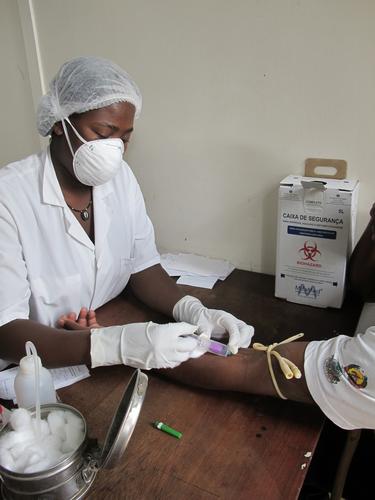Chronic Diseases and HIV, a growing relationship?
As more and more people get access to HIV treatment drugs, more patients are moving from being terminal to having it as a chronic illness related disease. Gone are the days when HIV was viewed as a death sentence for most people in Zimbabwe, rather the norm is now the saying " if you get HIV, get your pills and go on living" . However, will this is an obvious success in the thinking of the people, according to K M Venkat Narayan and Sten Vermund,
"Chronic disease among HIV positive people has been overlooked"
People worldwide are living with HIV. Massive global efforts and investments to deliver combination antiretroviral therapy (ART) have transformed a fatal infectious disease into a chronic, treatable disease. HIV-infected people who comply with ART now have near-normal lifespans — but as a result they may face the new threat of chronic noncommunicable diseases (NCDs). Stress, stigma, aging and HIV-related inflammatory changes increase the risk of some cancers as well as diabetes, heart disease, stroke, chronic kidney disease and mental health problems.
The huge gains made from implementing ART globally — 13 million people now get this treatment, nearly 90 per cent of whom live in low- and middle-income countries (LMICs) — will be lost unless the rise of NCDs in HIV survivors is addressed. High-income nations have been tackling this challenge since 1996, and it is time to do the same in LMICs too. .......Some studies have suggested that certain ART treatments may increase the risk of diabetes. There are also concerns about how ARTs may interact with drugs commonly used to manage NCDs. Some conditions, such as infectious myocarditis and other heart conditions associated with opportunistic infections, may be of special concern in countries where the prevalence of infectious disease, malnutrition and other poverty-related conditions is relatively high.
But a more important question is this: how must effective systems be developed to deal with NCDs among HIV survivors in regions facing severe resource constraints? ( for more .....http://www.scidev.net/global/hiv-aids/opinion/research-agenda-hiv-survivors.html
Africa
Chronic non communicable diseases,a challenge for the African Region.
The increasing burden of noncommunicable diseases (NCD) , particularly in the WHO African Region, threatens to overwhelm already over-stretched health services. The risk factors underlying the major chronic non communicable diseases which are; cardiovacular diseases, diabetes, cancer and chronic respiratory conditions are well documented. The known risk factors are unhealthy diet, physical inactivity, alcohol consumption and smoking. Primary prevention based on comprehensive population-based programmes is the most cost-effective approach to contain this emerging epidemic. ...http://www.afro.who.int/en/zimbabwe/zimbabwe-publications/1074-chronic-non-communicable-diseasesa-challenge-for-the-african-region.html
Zimbabwe
HEALTH and Child Care deputy minister Paul Chimedza last week disclosed that non-communicable diseases such as cardiovascular, cancer, mental health, diabetes mellitus and chronic respiratory complications had now become the country’s main killers ahead of HIV and Aids
According to the World Health Organisation (WHO) non-communicable diseases were a group of conditions that included cardiovascular diseases, cancer, mental health problems, diabetes mellitus, chronic respiratory diseases and musculoskeletal conditions.
WHO said non-communicable diseases were silent killers, had insidious onset, debilitating complications and resulted in painful deaths, adding the number of chronic disease-related deaths in the WHO African region in 2005 was close to 2,5 million people.
“WHO projects that 28 million people in the region will die from a chronic disease over the next 10 years. The rate of increase of deaths from chronic diseases will outstrip that from infectious diseases, maternal and peri-natal conditions and nutritional deficiencies more than four fold in the next 10 years.”
The Population Reference Bureau (2012) said in Zimbabwe, 21% of deaths were due to non-communicable diseases.
(https://www.newsday.co.zw/2014/04/07/non-communicable-diseases-surpass-aids-main-killer/)
Zimbabwe: Making HIV an ‘undetectable’ virus
Some resources on Zimbabwe, chronic diseases and HIV
Zimbabwe health statistics profile 2010 link http://www.aho.afro.who.int/profiles_information/images/7/78/Zimbabwe-Statistical_Overview.pdf?ua=1&ua=1
Zimbabwe statistics health factsheet
http://www.aho.afro.who.int/profiles_information/images/0/0c/Zimbabwe-Statistical_Factsheet.pdf?ua=1&ua=1
action framework for prevention and control of chronic disease
http://www.afro.who.int/en/downloads/doc_download/6880-action-framework-for-the-prevention-and-control-of-chronic-diseases.html

Comments
Post a Comment